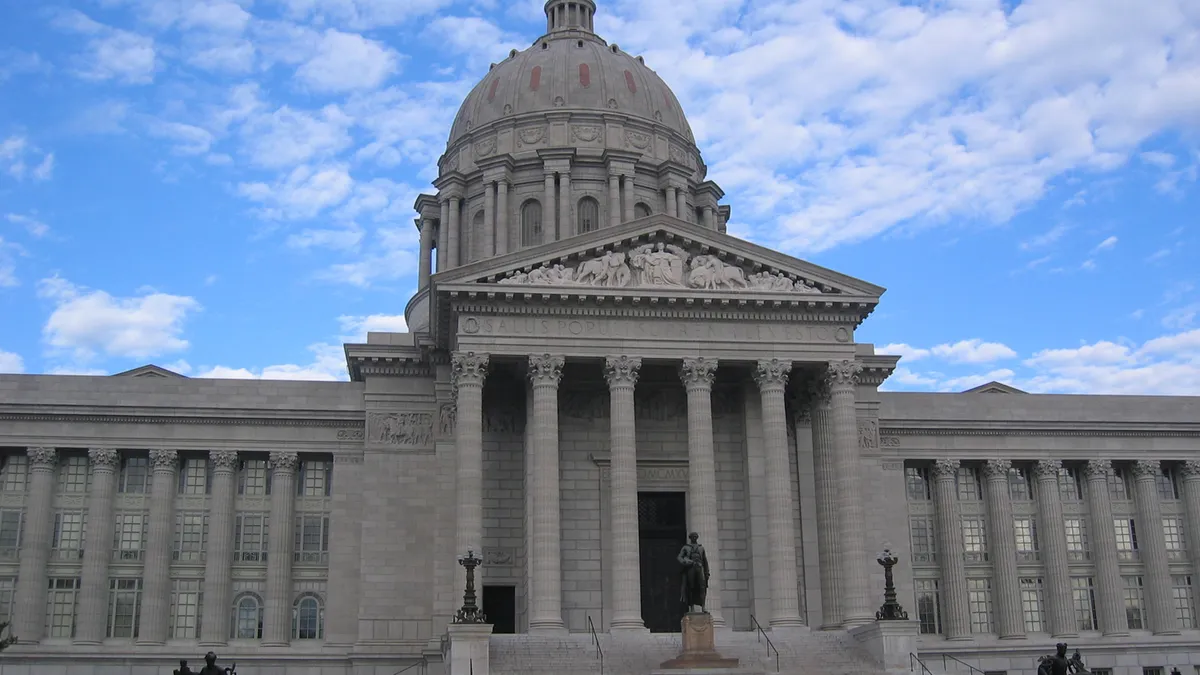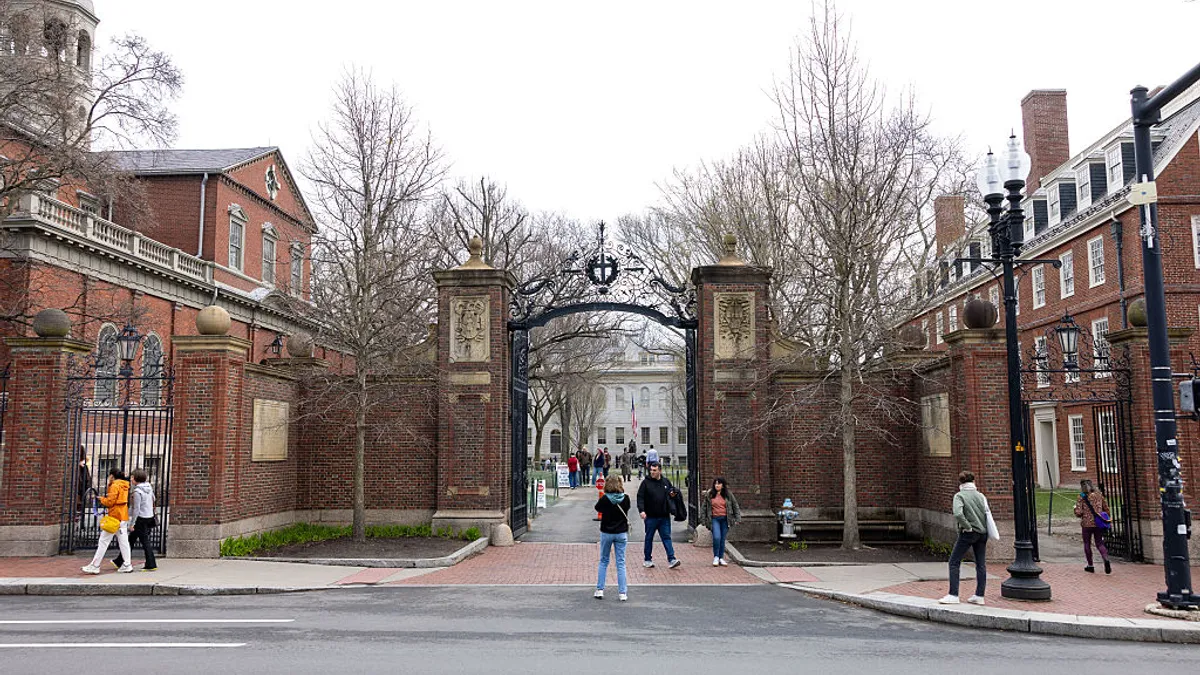Kim Ruben, a senior fellow on tax policy at the Urban Institute, believes “if you look at the economy, all the indicators are that it’s growing, we’re in this sort of boom period.”
Of course, with the tax bill set for a vote today and with the federal government's FY18 budget still waiting to be ironed out, the industry could see that change soon.
At the recent Higher Education Government Relations Conference in San Diego, former Under Secretary of Education Martha Kanter said she is expecting the sixth recession of her life “in the next five years,” because “the country galvanizes at periodic times in our lives, but we don’t learn lessons.”
For higher education, one of the major concerns is how the tax bill and other federal policies will impact state funding models and charitable giving. At the conference, policy experts discussed a number of state priorities which may impact both public and private institutions moving forward.
“The wildcard for state budgets is going to be federal tax reform: How will states respond in changes to the state and local tax deduction,” said Tom Harnisch, the American Association of State Colleges and Universities’ director of state relations and policy analysis.
For example, Ruben said the recent Moody’s downgrade of the industry “has a lot to do with they see revenue growth softening and the fact that revenue growth is lower than expenses -- if there’s affordability and enrollment pressure, those things limit tuition bill -- could get even worse depending on what happens with the tax bill.”
In Missouri, for example, “71% of revenue ... is generated through the income tax, but with changes to federal tax deduction, there could be as high as $700M loss in there, or other projections as high at $1 billion,” Harnisch said. “Now they could always change at the state level ... but you’ll have some governors who will say ‘hey, my citizens just got a huge tax cut, and I’m not going to raise taxes. We’re just going to have to make cuts.’”
Many fear those cuts will impact higher education significantly.
Collaborating to promote greater ROI
Shannon Gilkey, director of Education Strategy Group, said collaboration between K-12, higher education and the workforce needs to be much stronger as states and the federal government put more emphasis on outcomes. If access was the top priority in the earlier years of the Obama administration, certainly student -- and graduate -- success is emerging as the biggest priority for public officials who are looking for concrete ROI from the industry.
“Every year, the way higher ed is addressed by governors is in terms of its impact on economic and workforce development,” said Harnsich.
“We know as higher ed leaders that what happens in K-12 impacts what happens in higher ed and beyond,” Gilkey said. “It’s more than just being college-ready, it’s also about those wrap-around services in that transition from K-12 to higher ed to make students successful.”
Gilkey said he is hopeful that that new PROSPER Act to reauthorize the Higher Education Act will provide “some avenues” to encourage more collaboration between the sectors, noting specifically provisions around teacher prep and apprenticeship programs.
But higher ed leaders can also do their part to “make sure states are making college and career readiness a priority -- particularly through primary coursework [at the secondary level], and not through remedial courses” once they’re enrolled in college.
“At the state level, K-12 and higher ed need to be joined at the hip on revising those standards” for graduation, he said. “Standards and assessments, present opportunities for early intervention and allowing students to use their 12th grade year to catch up” where they may be behind, rather than putting the catch-up burden on higher ed. In many instances, dual- and early enrollment programs benefit colleges and universities as well, by ensuring students are college-ready before they arrive on campus.”
2018: major landscape shift
If the elections of 2012 “were really pivotal movement at the state level … the 2018 elections are going to be big, really big with huge implications for higher ed,” said Harnisch. With 36 governors will be up for re-election and 82% of legislative seats will be on the ballot next year, he said it is advantageous for higher ed leaders to get to know the candidates for 2018 now, because these are the individuals who will be responsible for the future of higher ed in their states -- particularly governors, who, according to Harnisch, get about 90% of what they want.
Harnisch said the top 10 policy issues for 2017 will largely linger into 2018: higher ed funding amid softening state budgets; affordability; economic and workforce development; guns on campus; institutional productivity and student success; academic freedom, civil rights and social issues; student debt management; dual enrollment; DACA and sexual assault.
The industry has seen a “post-recession shift to performance-based funding,” according to Harnisch, which brings its own challenges for institutions, particularly those serving higher numbers of students from failing K-12 systems.
Free-speech will continue to be an issue at the state levels, and in particular, how to balance free speech with safe spaces, academic freedom and actual intellectual growth, which are often swallowed up by reactions to controversy. At least 22 states have introduced bills on free speech in campus, and Colorado, Nevada, Utah, Arizona and Virginia have passed such bills, according to Harnisch.
“Some have worked to eliminate what’s known as free speech zones, saying the entire campus is a free speech zone,” and “Wisconsin has introduced a bill that is micromanagerial,” he said, as an example of some state legislation which “could be tying the hands of campus leaders in their ability to shut down an event if an event is getting out of control or presenting a threat to campus safety.”
Campus mergers are also a continually popular conversation in state houses as a way to save money, particularly in the Northeast and Midwest, Harnisch said. “In some cases it’s just consolidating back office functions, and in some cases it’s actual mergers.”
“The states that are really struggling for students are in the New England region and in some parts of the midwest,” he said. “There has not been a four-year campus that has actually turned off its lights, at least not in recent decades,” but many are feeling the pressures and closed for all intents and purposes.





















